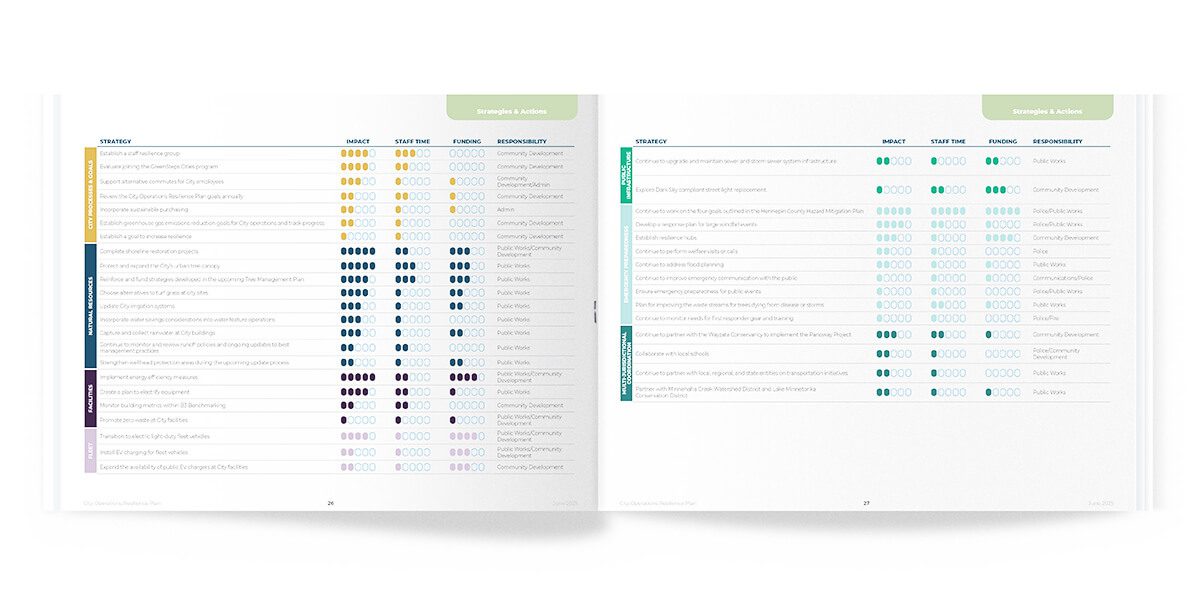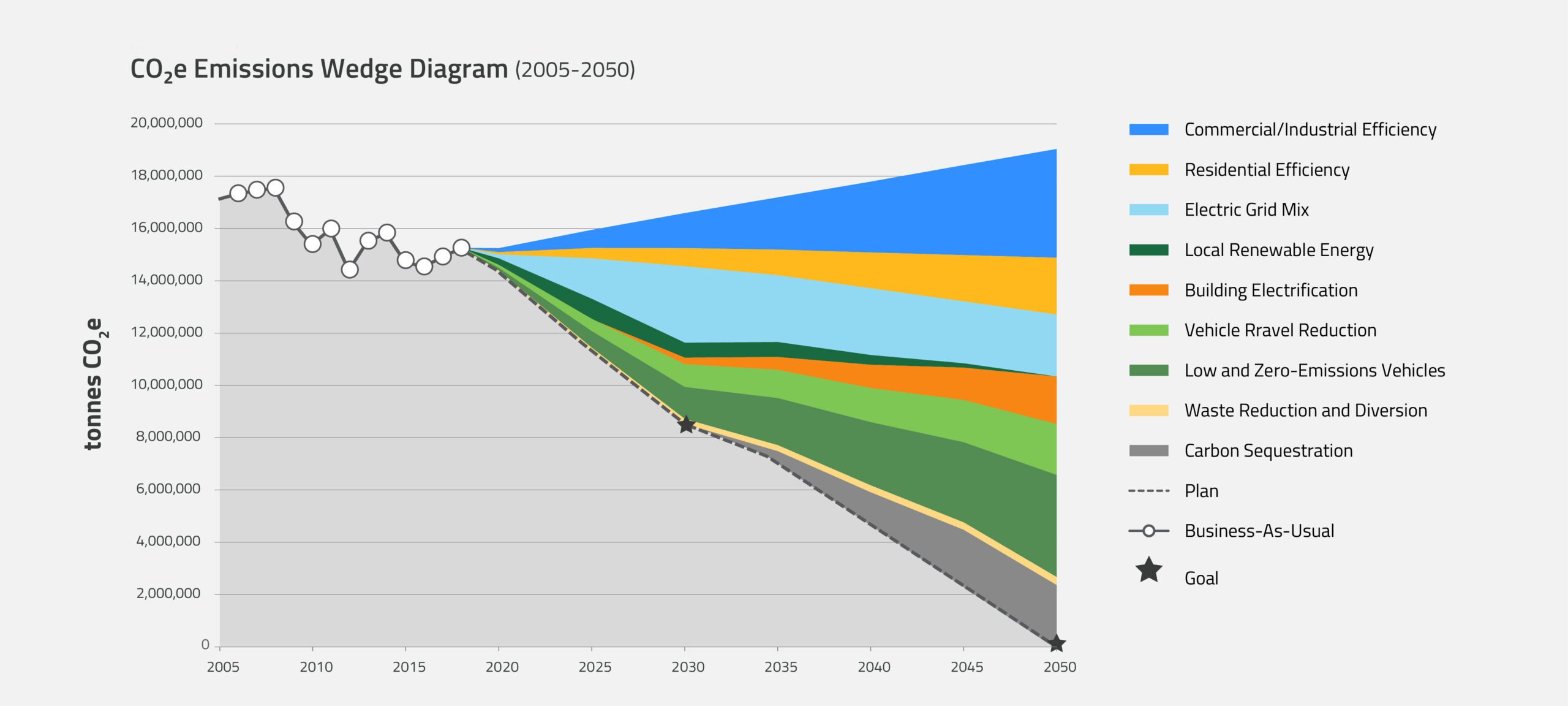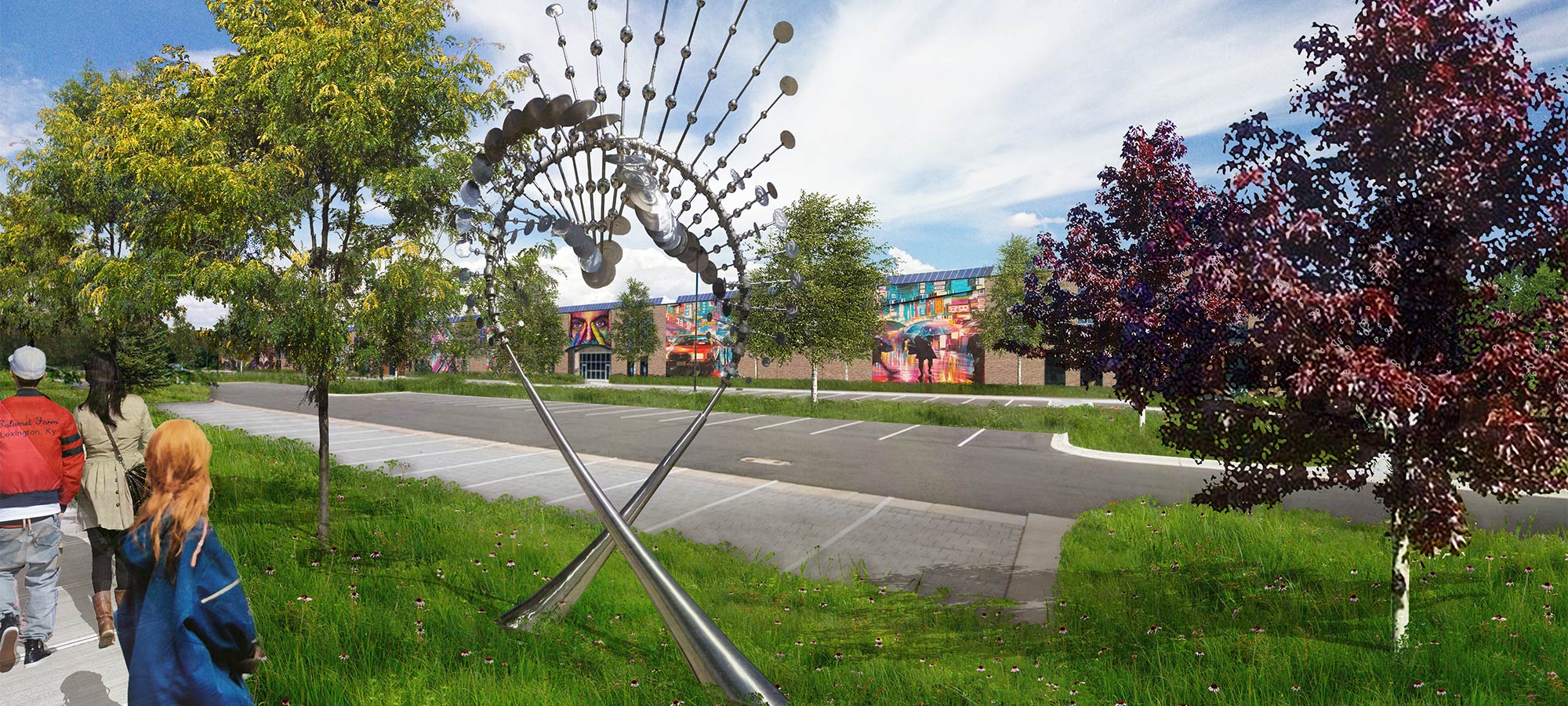City Operations Resilience Plan
Wayzata’s Path to Climate Resilience
The City of Wayzata partnered with LHB to develop a City Operations Resilience Plan that addresses both climate mitigation and adaptation. Supported by the Minnesota Pollution Control Agency’s Local Climate Action Grant, this plan will serve as an actionable and comprehensive guide for how the City can reduce greenhouse gas emissions and increase the resilience of its operations in the face of a changing climate.
LHB worked closely with City staff to assess climate vulnerabilities, inventory greenhouse gas emissions, and identify high-impact opportunities for increasing resilience across the natural resources, facilities, fleet, and public infrastructure within its operations. The plan also explores how Wayzata can lead by example — leveraging education, policy, and partnerships to influence broader community action.
The final plan provides a clear roadmap for implementation, outlining prioritized strategies to reduce emissions, adapt to climate risks, and enhance operational resilience. By taking proactive steps today, Wayzata is safeguarding its infrastructure, services, and community well-being for the future.

Assessing Vulnerabilities
The planning process began by developing an understanding of how climate change could affect City operations and impact residents. LHB analyzed issues including flood risk, tree canopy, and land use, and then considered Wayzata’s population and resources.

GHG in Wayzata Today
While City operations are the direct cause of only a small percentage of Wayzata’s total GHG emissions, the City has the greatest control over them. LHB analyzed GHG emissions for city-owned facilities, vehicles, streetlights/traffic signals, and water treatment/distribution to help the City prioritize GHG reduction actions where they will have the highest impact.

Reducing Risk
Working closely with City staff and the Energy and Environment Commission, LHB developed recommendations across a wide range of areas. Recommendations focused on things the City owns, manages, and operates as well as on policy and education tools to assist residents.











